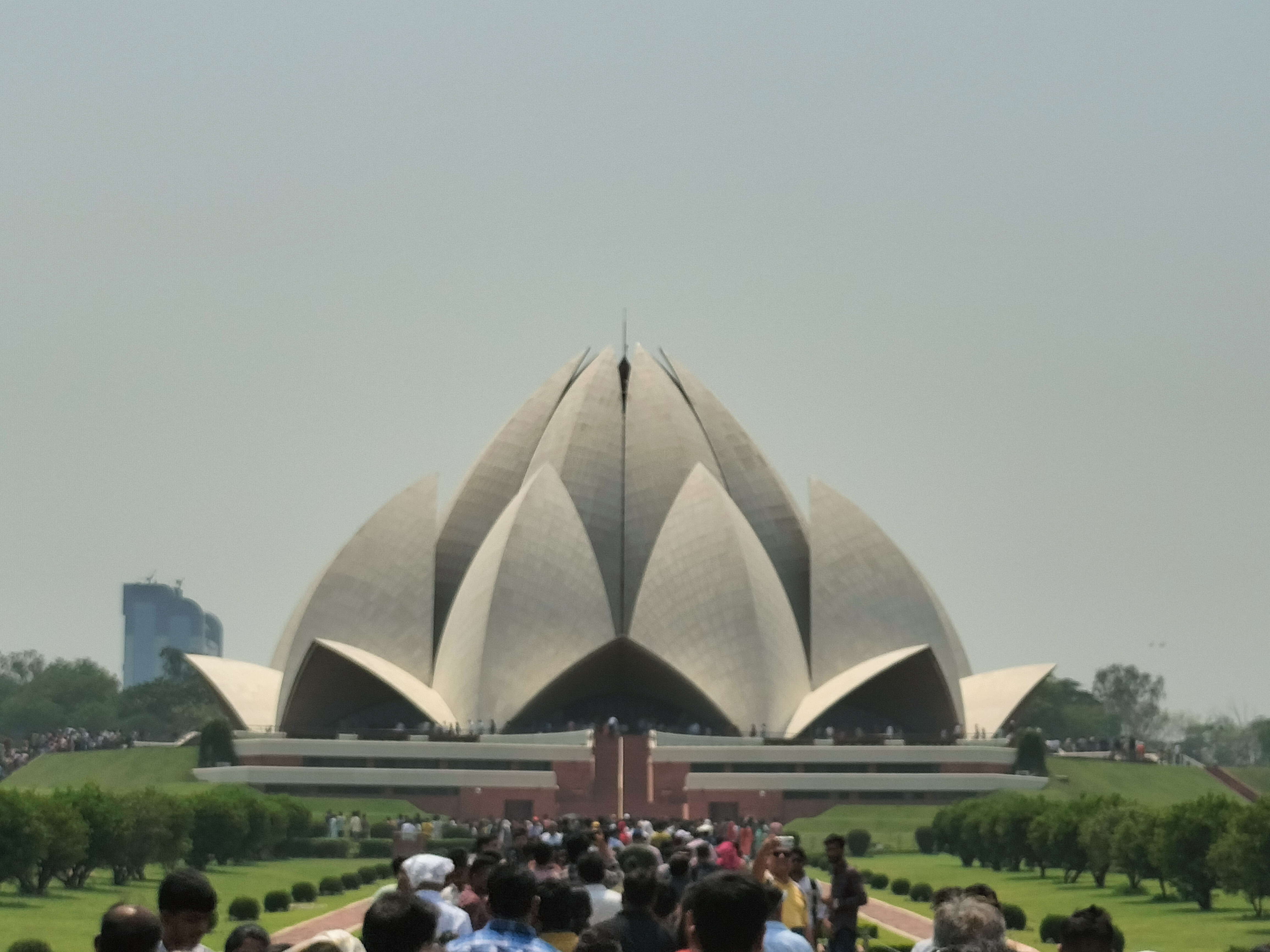Amidst the chaos of this dynamic city lies a sanctuary of tranquility and an architectural marvel, the Lotus Temple. This magnificent structure, shaped like a blooming lotus flower, stands as a testament to India’s religious diversity and its commitment to peaceful coexistence. In this blog, we delve into the captivating beauty and significance of the Lotus Temple, providing you with a glimpse into this serene oasis in the heart of Delhi.
Architectural SplendorThe Lotus Temple, also known as the Bahá’í House of Worship, is a masterpiece of modern architecture. Designed by Iranian-Canadian architect Fariborz Sahba, the temple’s distinctive lotus shape is a symbol of purity, serenity, and equality. Its stunning white marble exterior, consisting of 27 petals, reflects the sun’s rays during the day, creating a breathtaking sight. Illuminated in the evening, the temple appears ethereal against the night sky. The meticulous design and craftsmanship make it a true architectural gem.
Spiritual Significance: The Lotus Temple is a place of worship for the Bahá’í Faith, a religion that emphasizes the unity of all religions and the equality of all people. It welcomes individuals of all backgrounds, religions, and nationalities, promoting a message of harmony and oneness. The temple’s serene atmosphere and beautiful gardens provide visitors with a peaceful space for introspection, prayer, and meditation, irrespective of their beliefs. The ambiance of the Lotus Temple is conducive to reflection and contemplation, offering solace in the midst of a bustling city.
Gardens and Surroundings: The Lotus Temple is not only a visual delight but also offers an exquisite natural landscape. The surrounding gardens, meticulously maintained and adorned with colorful flowers and lush greenery, enhance the overall serenity of the temple complex. These gardens serve as a recreational space for visitors, providing a serene environment for leisurely walks or simply unwinding in the lap of nature. The temple complex also houses several administrative and educational buildings that further the Bahá’í Faith’s principles and teachings.
Cultural Exchange and Education: Apart from its spiritual significance, the Lotus Temple serves as a center for cultural exchange and educational activities. The temple conducts various programs, including lectures, seminars, and artistic performances that promote interfaith dialogue, peace, and understanding among different communities. It also hosts workshops and conferences on social issues, encouraging individuals to contribute to the betterment of society. The Lotus Temple’s commitment to education and community engagement makes it an inclusive and progressive institution.
Visitor Experience: Visiting the Lotus Temple is a captivating experience. As you step inside, you are greeted by the tranquility and silence that envelops the prayer hall. The absence of any religious symbols or idols symbolizes the universality of the Bahá’í Faith. Visitors are encouraged to maintain silence and engage in personal prayers or reflections. The temple’s open-door policy and serene ambiance create an atmosphere of acceptance and peace, leaving a lasting impact on those who visit.
ChatGPT Positive Score : 90%
Traveler’s info: Sundays and weekends are crowded. Don’t take eateries inside the premises, you will be asked to leave them at the gate.






